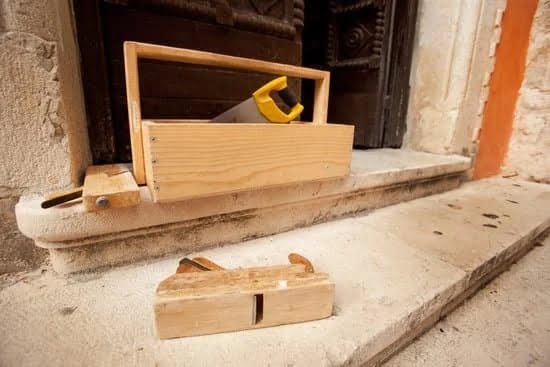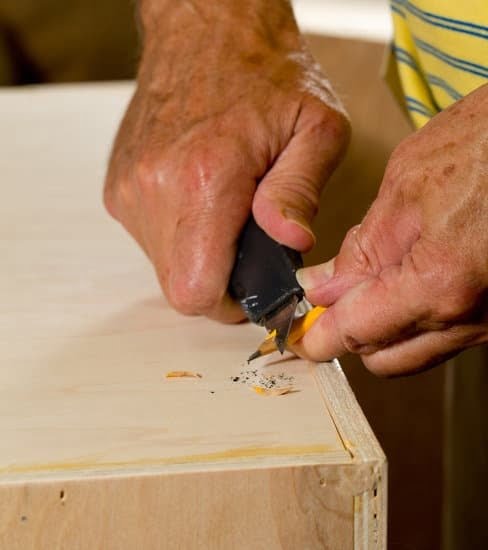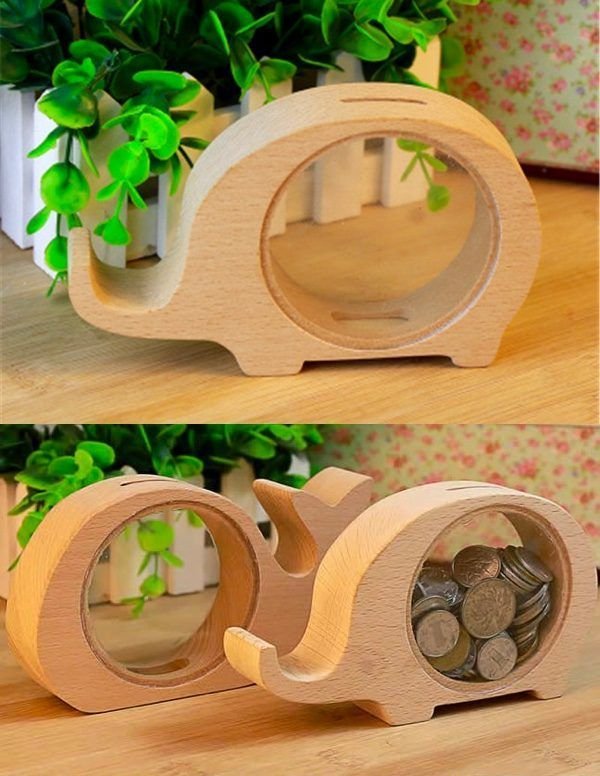What is an undercut in woodworking carving? Woodworking carving is a skilled craft that involves shaping wood into decorative and functional pieces. One important technique used in woodworking carving is undercutting, which plays a crucial role in achieving intricate designs and details in the finished work.
Undercutting involves removing material from underneath the surface of the wood to create a sense of depth and dimension. This technique allows carvers to produce intricate patterns, textures, and fine details that add visual interest to their projects. Understanding how to properly execute undercuts is essential for mastering the art of woodworking carving.
In this article, we will explore the basics of undercutting, its purpose and benefits, the tools and equipment needed, techniques for achieving clean undercuts, common mistakes to avoid, real-life examples of undercuts in woodworking carving, and the role of undercutting in different wood carving styles. Whether you’re a novice carver or an experienced woodworker looking to enhance your skills, understanding and mastering undercutting will take your woodworking projects to the next level.
Understanding the Basics of Undercutting
What Is an Undercut in Woodworking Carving?
An undercut in woodworking carving refers to the technique of cutting or carving away material from underneath a surface to create a recessed area. This process involves removing wood from beneath the main design, allowing for a greater sense of depth and dimension in the finished piece. Undercutting is commonly used to create intricate details and designs, as well as to enhance the overall visual appeal of a wood carving.
The Importance of Undercutting
One of the key reasons why undercutting is essential in woodworking carving is that it adds a three-dimensional element to the finished piece. By creating recesses and shadows through undercutting, carvers are able to achieve a more realistic and visually striking result. Additionally, undercutting allows for more detailed and delicate designs, as it provides greater contrast between different parts of the carving.
Challenges in Undercutting
While undercutting can greatly enhance the quality of a wood carving, it also presents certain challenges. One of the main difficulties in this technique is achieving clean and precise cuts, especially when working with intricate designs or hard woods. It requires patience, practice, and a steady hand to master the art of undercutting in woodworking carving. Understanding these challenges and how to overcome them is crucial for those looking to improve their skills in this aspect of wood carving.
The Purpose and Benefits of Undercutting in Woodworking Carving
Enhancing Dimension and Depth
One of the primary purposes of using undercutting in woodworking carving is to enhance the dimension and depth of a piece. By removing wood from underneath the surface, carvers can create a sense of depth and bring their carvings to life. This technique allows for intricate details to stand out, adding complexity and visual interest to the overall design.
Creating Visual Movement
Undercutting also serves the purpose of creating visual movement within a wood carving. By strategically removing wood from certain areas, artisans can achieve dynamic shapes and lines that guide the viewer’s eye across the piece. This creates a sense of flow and movement, adding visual appeal and capturing attention.
Adding Realism and Texture
In addition to enhancing dimension and creating movement, undercutting can also add realism and texture to a wood carving. By carefully undercutting specific areas, artisans can simulate textures such as fur, feathers, or foliage. This adds an element of realism to the carving, making it more lifelike and engaging for viewers. Moreover, it allows for light and shadow effects to play an integral part in giving carvings a more realistic appearance.
Overall, understanding the purpose and benefits of undercutting in woodworking carving is crucial for any aspiring artist looking to master this technique. Through enhancing dimension, creating movement, adding realism, texture versatility increases exponentially contributing ultimately making carvings more visually striking.
Tools and Equipment Needed for Undercutting
When it comes to creating beautiful and intricate wood carvings, having the right tools and equipment is essential. This is especially true when it comes to undercutting, a technique that requires precision and attention to detail. One of the most important tools for undercutting in woodworking carving is a good quality carving knife. A sharp, high-quality knife will allow for more control and accuracy when creating undercuts.
In addition to a carving knife, other essential tools for undercutting include gouges of various shapes and sizes. These gouges are used to remove wood from the underside of a carving, creating the undercut effect. It’s important to have a variety of gouges on hand to accommodate different shapes and depths of undercuts. Additionally, a mallet or hammer may be needed to provide extra force when using gouges to create the undercuts.
Another crucial piece of equipment for undercutting in woodworking carving is a v-tool. This tool has a v-shaped tip that is used to remove wood at an angle, allowing for precise and clean undercuts. Like with the carving knife and gouges, it’s essential to invest in a high-quality v-tool to achieve the best results in undercutting.
| Tools | Equipment |
|---|---|
| Carving Knife | Gouges |
| Mallet/Hammer | V-Tool |
Techniques and Methods for Achieving Clean Undercuts
Woodworking carving is an intricate and delicate art that requires precision and skill. One important technique in woodworking carving is undercutting, which involves cutting the wood at an angle to create a recessed area. But what is an undercut in woodworking carving? An undercut is essentially a cut made underneath the surface of the wood, allowing for a sense of depth and dimension in the final piece.
To achieve clean undercuts in woodworking carving, it’s essential to use the right tools and methods. Chisels are commonly used to create undercuts, and they should be extremely sharp to ensure clean and precise cuts. Additionally, it’s important to have a steady hand and take your time when creating undercuts, as any mistakes can be difficult to fix once the wood has been removed.
One method for achieving clean undercuts in woodworking carving is to first outline the area where the undercut will be made using a pencil or marking tool. Then, carefully use a chisel to remove small amounts of wood at a time, working your way towards the desired depth.
It’s crucial to work slowly and cautiously, as rushing through this process can result in messy and uneven undercuts. Practice and patience are key when mastering the art of achieving clean undercuts in woodworking carving.
| Undercut Technique | Description |
|---|---|
| Use of Sharp Chisels | Sharp chisels are essential for creating clean and precise undercuts. |
| Outline Before Cutting | Outlining the area where the undercut will be made helps maintain precision. |
Common Mistakes to Avoid in Undercutting
When it comes to woodworking carving, undercutting is a crucial technique that adds depth and dimension to the final piece. However, beginners often make some common mistakes when attempting to execute undercuts. Understanding these mistakes and how to avoid them is essential for mastering the art of undercutting in woodworking carving.
One of the most common mistakes in undercutting is using the wrong tools or not using them properly. It’s important to use sharp and appropriate tools for undercutting, such as gouges and chisels, to achieve clean and precise results. Using dull or unsuitable tools can lead to rough and messy undercuts, ruining the overall quality of the carving.
Another mistake to avoid is failing to plan or visualize the undercut before making any cuts. Without a clear plan or visual representation of where the undercuts should be placed, carvers might end up with uneven or misplaced undercuts. It’s important to carefully mark and plan out the areas that require undercutting before beginning the carving process.
Additionally, rushing through the undercutting process can result in sloppy work. Carvers should take their time and work patiently when creating undercuts, ensuring that each cut is carefully executed to achieve the desired effect. Rushing through the process can lead to errors and inaccuracies in the undercuts, detracting from the overall quality of the woodworking carving.
By understanding these common mistakes and taking the necessary precautions, woodworkers can improve their undercutting techniques and create more refined and polished woodworking carvings. Paying attention to tool selection, planning, and patience can help artists achieve clean and precise undercuts while avoiding these common pitfalls.
Real-Life Examples of Undercuts in Woodworking Carving
When it comes to woodworking carving, the technique of undercutting is essential for creating intricate and detailed designs. This technique involves cutting or carving underneath the edges of a design to create depth and dimension. Here are some real-life examples of how undercuts are used in woodworking carving:
- Creating intricate floral patterns: One common example of undercutting in woodworking carving is seen in the creation of floral patterns. By carefully undercutting the petals and leaves of a flower design, woodworkers can achieve a lifelike and three-dimensional effect, adding depth and realism to their carvings.
- Sculpting human figures: Another example of undercuts in woodworking carving can be seen when sculpting human figures. By strategically undercutting certain areas such as folds in clothing or facial features, woodworkers can add realism and emotion to their carvings, bringing their creations to life.
- Carving architectural details: In architectural woodworking carving, undercuts are often used to create intricate details such as columns, moldings, and rosettes. By skillfully undercutting these elements, woodworkers can achieve a level of detail that adds visual interest and sophistication to their work.
These examples demonstrate just how important the technique of undercutting is in woodworking carving, allowing artists to create stunning works with depth and dimension.
Overall, mastering the art of undercutting is crucial for any woodworker looking to take their carvings to the next level. By understanding the basics of this technique and practicing proper methods, woodworkers can achieve clean and precise undercuts that enhance the beauty and detail of their creations. Whether it’s creating floral patterns, sculpting human figures, or adding architectural details, undercuts play a vital role in bringing woodworking carvings to life.
The Role of Undercutting in Different Wood Carving Styles
Woodworking carving is a versatile art form that can be practiced using various styles and techniques. One crucial technique in woodworking carving is undercutting, which plays a significant role in different wood carving styles. Understanding how to utilize undercutting in different styles can elevate the overall quality and intricacy of your carvings.
The Role of Undercutting in Different Wood Carving Styles
Here are some common wood carving styles where undercutting plays a vital role:
- Relief Carving: In relief carving, the design is carved into a flat surface, creating a three-dimensional effect. Undercutting helps to create depth and dimension by allowing certain elements to stand out from the background.
- Chip Carving: Chip carving involves removing small chips of wood to create intricate geometric patterns. Undercutting is essential in chip carving as it helps define the sharp edges of the pattern, adding depth and detail to the design.
- Whittling: Whittling is a style of wood carving where small cuts are made on a piece of wood to create figures or decorative objects. Undercutting adds texture and detail to whittled pieces, making them more visually appealing.
Each wood carving style requires a unique approach to undercutting, and mastering this technique can significantly enhance the overall quality and visual appeal of your carvings.
In addition, understanding how to effectively use undercutting in different wood carving styles opens up opportunities for creative expression and experimentation. Whether you are aiming for intricate details or bold textures, mastering the role of undercutting in various styles will allow you to push the boundaries of traditional wood carving techniques and create truly unique pieces.
Conclusion and Tips for Mastering the Art of Undercutting
In conclusion, understanding the concept of undercutting is essential for mastering the art of woodworking carving. Undercutting involves cutting away wood from underneath a carving to create depth and dimension, adding complexity and detail to the finished piece. This technique allows for intricate designs and realistic representation of objects or figures in wood.
To master undercutting, it is important to have a good understanding of the tools and equipment needed, such as gouges and chisels of various shapes and sizes. Additionally, learning the proper techniques and methods for achieving clean undercuts is crucial, as precision is key in creating professional-looking carvings.
It is also important to be mindful of common mistakes to avoid in undercutting, such as not maintaining sharp tools or rushing through the process. Taking the time to perfect this skill will greatly enhance the quality of your woodworking carvings.
Overall, mastering the art of undercutting in woodworking carving can greatly elevate your work and allow you to bring your creative visions to life in a unique and impressive way. With practice and dedication, you can become proficient in this technique and take your woodworking carvings to the next level.
Frequently Asked Questions
What Is Undercut in Woodworking?
In woodworking, an undercut refers to the removal of a portion of material from the underside or edge of a wooden piece. This technique is commonly used to create joints, such as dovetail or mortise and tenon joints, where one part fits into another with precision.
The undercut allows for a snug fit and adds strength to the joint, making it an essential part of creating sturdy and durable wooden structures.
What Is the Purpose of the Undercut in Machining?
In machining, the purpose of an undercut is to create a recess or groove in a metal workpiece that allows for additional components or features to be added. This can be useful in creating threads, slots, or other intricate designs that require precise measurements and clearances.
The undercutting process helps to ensure that the final product meets specific dimensional requirements and allows for complex assemblies in machining.
What Is Undercut in Sculpture?
In sculpture, an undercut refers to the area of a three-dimensional piece that has been hollowed out or carved away, usually found beneath overhanging elements like protruding limbs or drapery. This technique creates depth and dimension within the sculpture by adding shadow and allowing light to play off different surfaces.
Undercuts are often strategically placed to enhance the visual impact of the artwork and contribute to its overall aesthetic appeal.

Hi everyone! I’m a woodworker and blogger, and this is my woodworking blog. In my blog, I share tips and tricks for woodworkers of all skill levels, as well as project ideas that you can try yourself.





